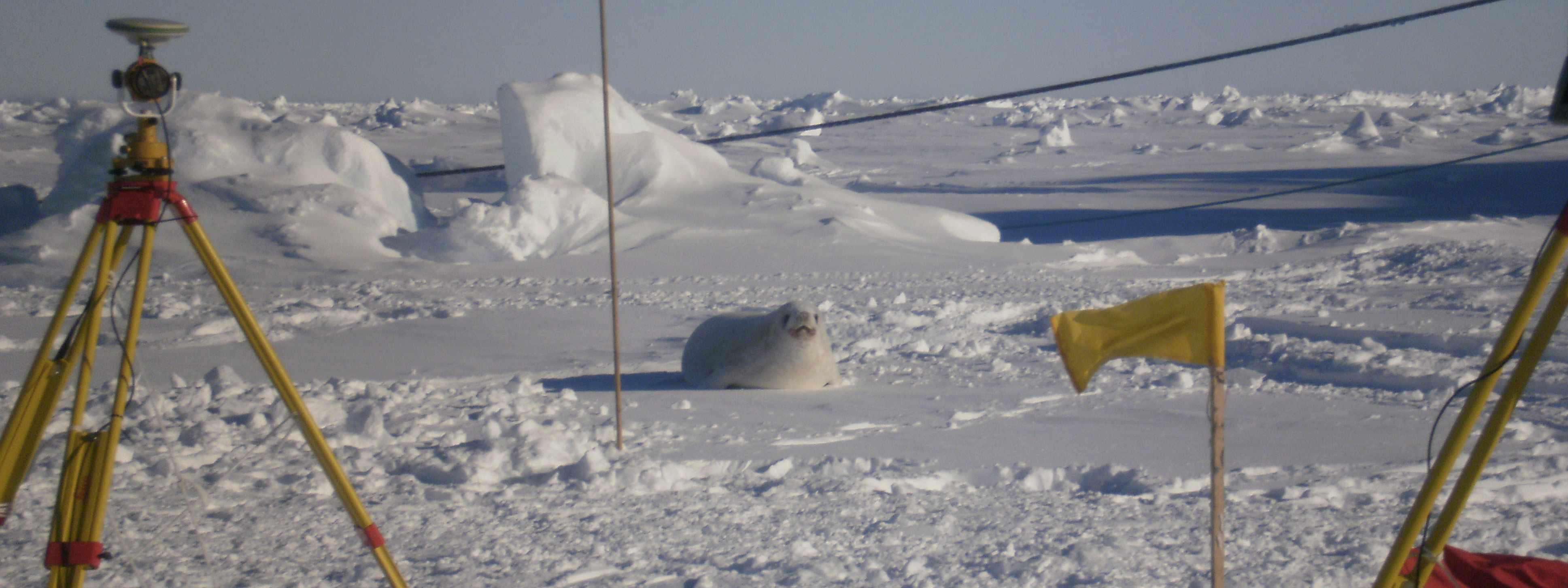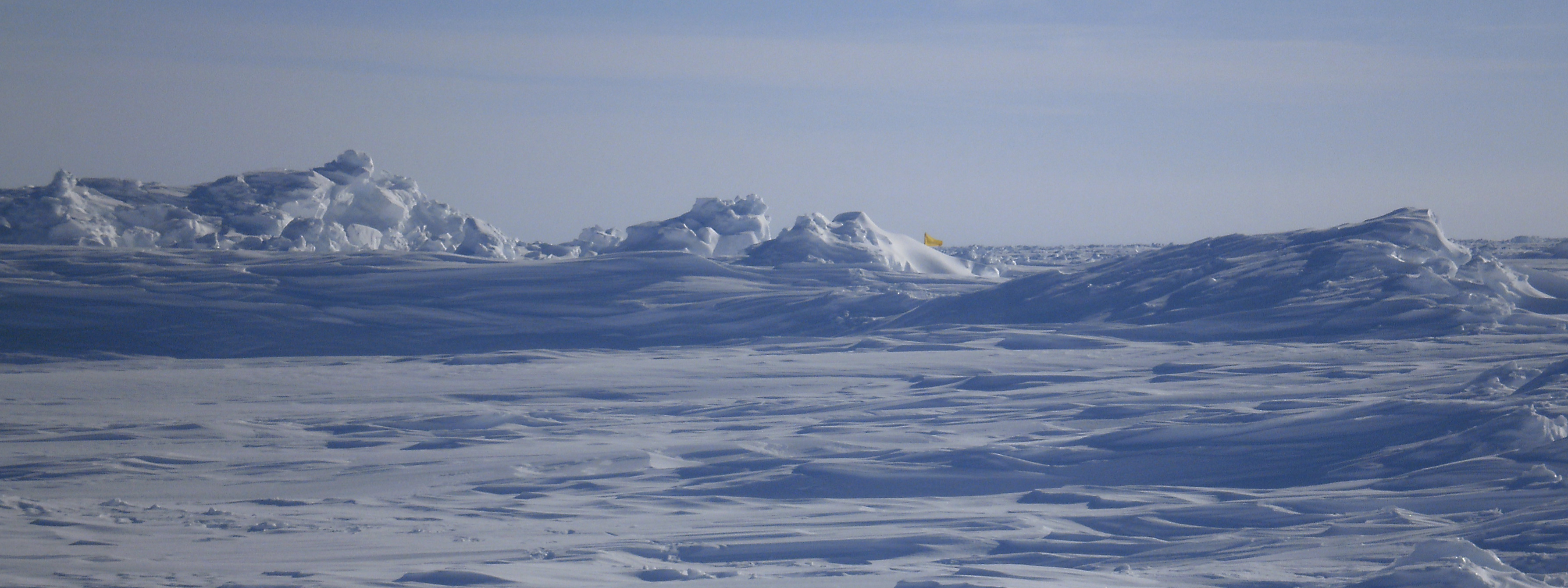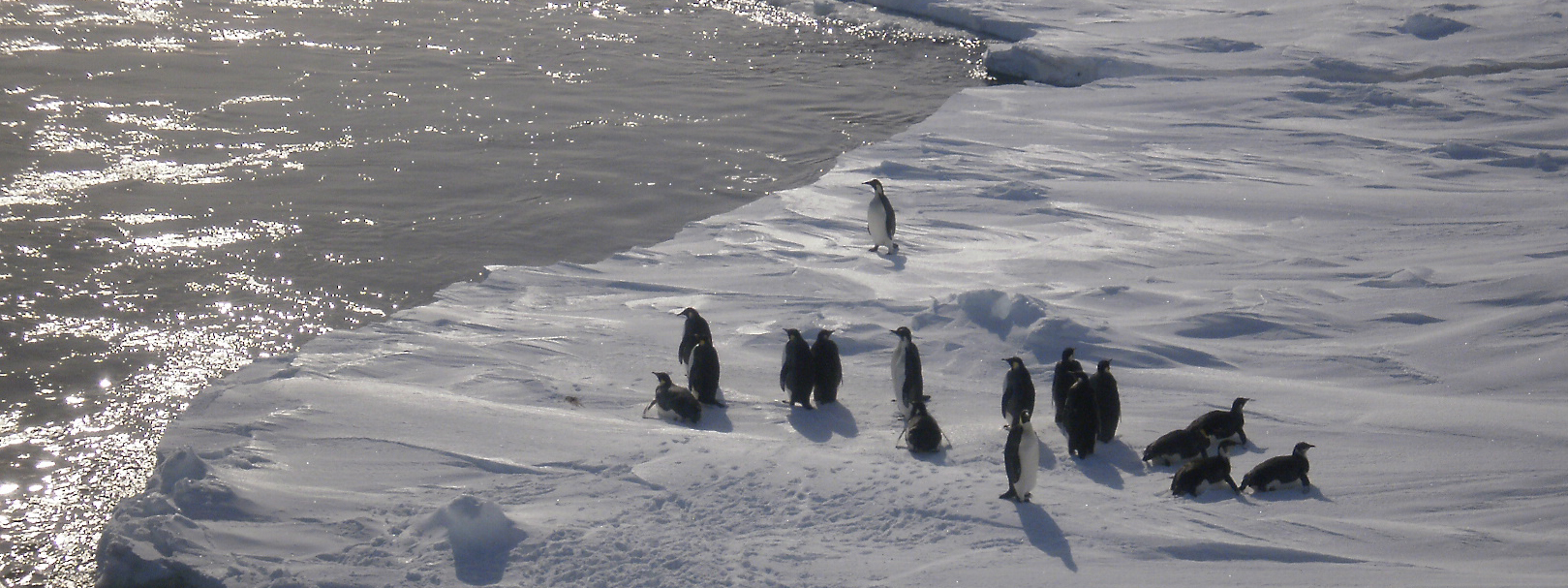Summary for a general audience
Sea ice is present at the surface of the two polar oceans of the Earth. The sea ice cover in the Arctic (i.e., at the North Pole) is largely shrinking in response to the global warming (Fig. 5). In the 5th assessment report of the Intergovernmental Panel on Climate Change (IPCC AR5 [1]), the decrease in Arctic ice extent is estimated to be between –0.45 and –0.51 million km2 per decade over the period 1979–2012.

On the contrary, the sea ice extent in the Southern Ocean has been slightly increasing over that period, at a rate estimated to be between 0.13 and 0.2 million km2 in the IPCC AR5. This growth of ice extent results from an increase in ice concentration in most part of the Southern Ocean and a decrease in ice concentration close to the Antarctic Peninsula (Fig. 6).

Over the last years, the Arctic and Antarctic sea ice broke minimum and maximum records respectively, continuing the long-term decreasing and increasing trends. On 22 September 2014, the Antarctic sea ice extent hit its maximum extent since 1979 at a value of 20.11 million km2 [3]. The current expansion of the Antarctic sea ice appears rather puzzling in a global warming context associated with a large temperature increase at global scale.
The evolution of the Antarctic sea ice is driven by the combination of different mechanisms associated with both the external forcing (i.e. the factors external to the Earth’s climate system such as the volcanic eruptions, the variations of the orbit of the Earth around the Sun, the emissions of greenhouse gases, etc.) and the internal variability of the climate system. The internal variability is inherent to the chaotic nature of the climate system. The latter is indeed able to generate variations on its own thanks to internal processes without implying any external source.
The internal variability in the Southern Ocean is particularly strong and the observed increase in Antarctic sea ice extent might thus be generated by internal processes. Disentangling the contribution of the external forcing and of the internal variability in the observed changes in Antarctic sea ice is a burning issue for the scientific community that has not been resolved yet. Indeed, the mechanisms that drive the evolution of the sea ice involve complex interactions with the other components of the climate system, in particular with the underlying ocean and the overlying atmosphere, that are not completely understood at this stage.
A part of the research activities carried out in the framework of the PREDANTAR project aimed at improving our understanding of the interactions between the sea ice and the vertical structure of the ocean. This vertical structure depends on the density of the different layers of water. The density of the seawater is essentially influenced by its temperature (the colder the denser) and its salinity (the saltier the denser). The oceanic column is vertically stratified when the layers are superimposed according to their densities, the least dense layers lying above denser ones. In a strongly stratified oceanic column, the different layers barely mix with each other and there is thus nearly no exchange of heat between the layers. On the contrary, a weakly stratified ocean allows more mixing and thus more heat exchange between the layers.
A freshwater input at the surface of the ocean reduces the density of the surface layer and therefore leads to a strengthening of the stratification. The stronger stratification in turn reduces the exchange of heat from the generally warmer interior ocean and the colder surface, a situation that favors the formation of sea ice (Fig. 7).

Such an increase in the freshwater flux at the surface of the Southern Ocean in response to the climate changes has been proposed in several studies as a possible explanation for the observed expansion of the Antarctic sea ice cover. This freshwater input could be due to the enhanced hydrological cycle under global warming conditions that induces an increase in the precipitation at high latitudes [4]. The Antarctic ice sheet (i.e. the thick ice layer covering the Antarctic continent) may undergo a melting in response to the global warming, contributing to an additional freshwater input in the Southern Ocean [5]. At this stage, nor the enhanced hydrological cycle neither the melting of the Antarctic ice sheet have been firmly confirmed as the dominant cause for the observed increase in Antarctic sea ice extent.
As mentioned above, the formation of sea ice rejects salt and thus increases the density of the water at the surface, resulting in a weakening of the stratification of the ocean. Consequently, the winter season (roughly spanning July, August and September in the Southern Ocean) is characterized by weak stratification in the top layers of the ocean. Besides, the melting of the sea ice leads to a freshwater input at the surface that decreases the density of the surface layer, inducing a strengthening of the ocean stratification. Consequently, during the summer season (roughly spanning January, February and March), the oceanic column gets more stratified.
The seasonal cycle of sea ice can then lead to a stronger stratification of the underlying ocean if the cycle of sea ice formation and melting is considered over a whole year (Fig. 8). This statement is based on the fact that the salt rejected during the formation of sea ice in winter is mixed over a deep layer of the ocean. On the contrary, the freshwater released by the melting of sea ice during summer is included in a shallow layer. Over a year, the seasonal cycle of sea ice formation and melting thus results in a net downward transport of salt that increases the density of the water at depth. The ocean thus gets more stratified. This stronger stratification of the ocean weakens the vertical mixing in the oceanic column and thus reduces the transport of heat from the interior of the ocean towards the surface. Consequently, more sea ice can form and a positive feedback loop develops. This positive feedback has been extensively investigated within the scope of the PREDANTAR project. The work carried out lead to the conclusion that this mechanism can play a role in the strong variability of the Antarctic ice cover and have likely contributed to the observed increase in sea ice extent [6].












